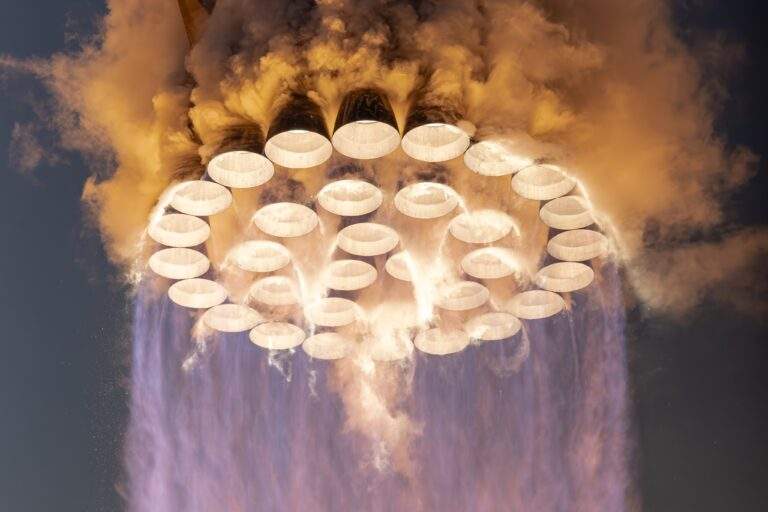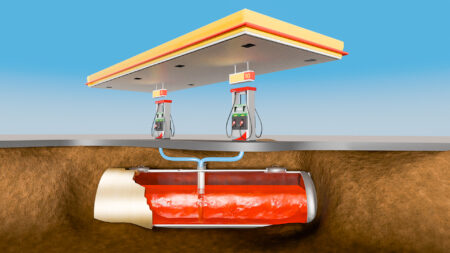This is Baikonur, Kazakhstan on a cold winter’s morning in 1998. On this day, the world’s most expensive and impressive engineering project came to life. This is of course the first module of the International Space Station being launched into orbit.
Over the next decade, the Americans and the Russians grew the ISS to be the size of an entire football field. Since the year 2000, it’s had a constant presence of humans, living and working onboard the station.
Not only has it been an incredible engineering achievement, but the fact that America and Russia have worked together so closely is almost even more incredible. But it seems like that collaboration could be coming to an end. Russia has announced that it plans to leave the ISS after the year 2024.

Before we go into how this will affect the space station, we need to talk about this guy, Dmitry Rogozin. This man was the head of the Russian space agency for the last 4 years, but he’s more well known for his humorous tweets.
Dmitry Rogozin

He’s the one who threatened to detach the Russian part of the space station and crash it into America. In a rage of insecurity, he also covered up all of the international flags on one of his Russian rockets. So obviously the Russian space program has been in good hands for the last few years. But just recently, Dmitry was fired and replaced by a man named Yuri Borisov.
After only being in the job for a matter of weeks, he announced the big news that Russia would be saying goodbye to the ISS and starting its own space station. But according to him, this had nothing to do with politics.
All joking aside, this isn’t actually all that surprising. The ISS is now over two decades old, and as the tech on board gets even older, it will only cause more and more problems. One of the reasons that Russia wants to leave is that they are spending more time fixing things than actually performing experiments.
Since it’s so expensive to send things up to the ISS, it’s not very often that things get updated. The main computers on the ISS are from 1988 and have less processing power than the original PlayStation. But it’s not as easy as just sending the latest Macbook up there.

In order for computer components to work well in space they have to be radiation hardened. This is a lengthy process that involves years of customizing each electrical component, protecting them from the intense radiation that hits the ISS every day.
It can take years just to certify that a laptop is ready to survive in space, and by that time it’s already well out of date. Of course, NASA also sends regular laptops and iPads up there, but they are expected to fail. In fact, there are over 100 laptops on the ISS and most of them don’t work. Imagine there being some kind of dungeon with piles of old ThinkPads stacked on top of eachother.
Either way, the ISS is old and if Russia wants to move on and start its own space station, then let them do it. But it’s not so easy. After all, it’s called the International Space Station, and every member plays its role in keeping it running. The US provides the Russian segment with all of its power and most of its communications too.
Russia’s role in the ISS
This section here is the Russian segment and contains various thrusters that are used to steer the space station. One of the most important tasks these thrusters need to carry out is re-boosting the station. You see, although the ISS is in space, there are still tiny traces of atmosphere at this altitude, which slow the station down and lower its orbit.
Because of this, the station can lose up to 100 meters in altitude every single day. If nothing was done about this, the space station would sink lower and lower, before eventually burning up in the atmosphere. The way they avoid this is by firing up the thrusters on the Russian segment about once a month to accelerate the station and increase its altitude.

This process can be seen in this video where astronauts slowly start to float down the station as the thrusters are firing. In reality, we’re actually seeing the station move around the astronauts.
If Russia took away its segment, the space station would have no way of raising its altitude or avoiding debris impacts. It would also cause problems when it came time to retire the ISS, since it wouldn’t have the control to carefully deorbit into a safe part of the Ocean.
American takeover
Another possible scenario is that the Russians save the hassle of detaching their segment and leave it for the Americans to use, essentially paying rent to the Russians. This would be great for the astronauts, since there are only two bathrooms on the station and one of them is in the Russian segment.
Even if Russia eventually decides to separate from the ISS, they will need to work with the US to figure out exactly how that would be done. Each module has layers of internal and external connections that have built up over many years and they weren’t designed to be disassembled.
So actually detaching the Russian segment would be a huge logistical challenge. Without being connected to the US segment, the Russians would have no power, so the idea of sailing off and using it by themselves won’t work.
Russia’s new Space Station “Ross”
That’s why Russia already has plans to launch its own space station by around 2028. Of course, Russia is no stranger to space stations, in fact – most space stations that have ever been built were Russian. But with the current state of their space program, it seems highly unlikely that they’ll have a brand new space station up and running by then. But either way, their plan is quite interesting.

Their new space station named ‘Ross’ is designed to be very hands off and automated. The plan is to operate it mostly without humans, with crews only visiting the station every few months to help out with experiments and maintenance tasks.
The station will feature autonomous robots that hover around the station, performing maintenance on the outside. Overall, this space station should be lightyears ahead of the ISS in terms of its design – at least more efficient, cost effective and maintenance friendly. If Russia eventually pulls this off, we will have 3 space stations orbiting Earth.
No matter what you think of the current situation, that is pretty cool. And with some ambitious plans from NASA and SpaceX, it’s possible that we could have space stations around the Moon and Mars in the future. But in the end, it’s likely that Russia’s threat to leave the ISS is no more than just a threat.
According to the engineers on the ground, it’s clear that the goal is to continue working with NASA and the international partners beyond 2024. And so, despite the age of the space station, it will hopefully continue pushing the boundaries of science and helping us to further our understanding of Earth and the Universe.














I don’t think the title of your article matches the content lol. Just kidding, mainly because I had some doubts after reading the article.
Thank you for your sharing. I am worried that I lack creative ideas. It is your article that makes me full of hope. Thank you. But, I have a question, can you help me?